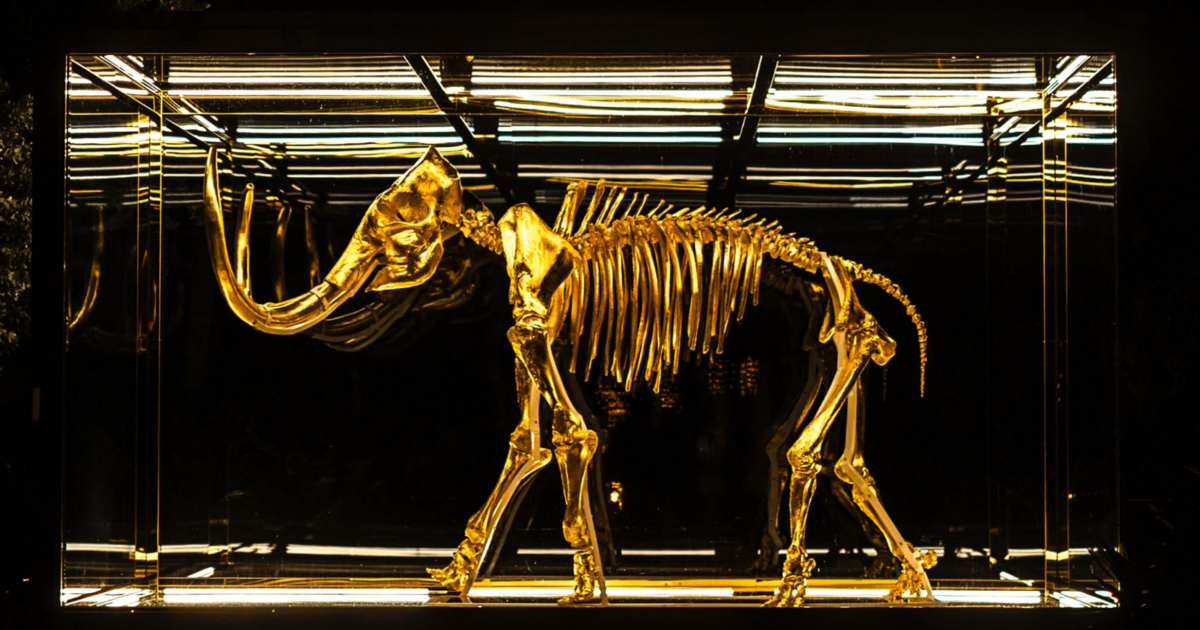https://www.europesays.com/2218272/ Health advisory issued for Murtaugh Lake disrupts Fourth of July celebrations #AlgalBlooms #america #cyanobacteria #Entertainment #FOURTHOFJULY #HarmfulAlgalBlooms #health #Idaho #LakeSafety #MagicValley #sports #TwinFalls #TwinFallsIdaho #UnitedStates #UnitedStatesOfAmerica #US #USA #WaterHazards
Recherches récentes
Options de recherche
#cyanobacteria
Wow.
https://scholar.social/@animalculum/114796850392714655
animalculum@scholar.social - How #cyanobacteria expand #SoilCrusts in harsh desert environments https://phys.org/news/2025-06-cyanobacteria-soil-crusts-harsh-environments.html paper: https://www.cell.com/the-innovation/fulltext/S2666-6758(25)00150-X
"Upon wetting, M. vaginatus begins migrating toward the surface within minutes, moving within the tunnels. This enables cyanobacteria to secure soil particles and thrive in arid environments."
How #cyanobacteria expand #SoilCrusts in harsh desert environments https://phys.org/news/2025-06-cyanobacteria-soil-crusts-harsh-environments.html paper: https://www.cell.com/the-innovation/fulltext/S2666-6758(25)00150-X
"Microcoleus vaginatus constructs microscopic, tunnel-like structures within the crust. These tunnels connect M. vaginatus, located approximately 300 µm below, to the crust's surface. Upon wetting, M. vaginatus begins migrating toward the surface within minutes, moving within the tunnels. This enables cyanobacteria to secure soil particles and thrive in arid environments."
Meet the Speakers of Soapbox Science Brussels 2025!
Say hi to the brilliant Nora Colson, PhD researcher at Hasselt University — working at the crossroads of #spacescience and #sustainability.
Nora’s research explores an unexpected partnership: diamonds and #cyanobacteria! Her mission? Finding innovative ways to produce #hydrogen fuel for space missions, paving the way for a greener future beyond Earth.
Catch her live on June 28th, 2PM, at Carrefour de l’Europe / Europakruispunt.
Novel Fungus-Cyanobacterium Symbiosis https://schaechter.asmblog.org/schaechter/2025/04/novel-fungus-cyanobacterium-symbiosis.html
A thallus-forming N-fixing fungus-cyanobacterium #symbiosis from subtropical forests https://www.science.org/doi/10.1126/sciadv.adt4093
"Despite resembling a lichen's vegetative tissue, their sample had an unexpected feature: it was made of interwoven cyanobacterial filaments that enclosed fungal hyphae. Both partners turned out to be previously undescribed species, different from those found in #lichens"
Weekend #Plankton Factoid
There is a giant, vibrantly blue, 9 meter tall, 20 tonne interactive #sculpture celebrating stromatolites (fossil cyanobacteria) in Cornwall, England. The Eden Project houses this fantastic piece of art by Azusa Murakami and Alexander Groves called "infinity blue" made of local clay to celebrate how #cyanobacteria transformed the Earth's early atmosphere by forming oxygen through photosynthesis (represented as huge vapour rings). #art #science
https://www.designboom.com/art/studio-swine-infinity-blue-eden-project-breathing-sculpture-02-19-2019/
#Lichens are symbionts. There is a #fungal component (most are about 90 percent fungus) and a photosynthetic component (#algae or #cyanobacteria). Whether lichens can survive on #Mars depends on the species. https://arstechnica.com/science/2025/04/lichens-can-survive-almost-anything-and-some-might-survive-mars
https://www.europesays.com/uk/31270/ “Oceans Were Never Blue”: Shocking New Study Reveals Earth’s Waters Were Green 3.8 Billion Years Ago, Rewriting Planetary History #Cyanobacteria #Environment #GeologicalDiscovery #MarineEcosystems #Science #UK #UnitedKingdom
Looking for a #postdoc position?
Come work with us on CO2 fixation in #cyanobacteria using #biochemistry and #CryoEM!
We are a friendly group.
Always love this blog - now here's an engaging tribute to a fine phycologist, packed with scientific info as well as personal context #cyanobacteria #LifeOnEarth
https://microscopesandmonsters.wordpress.com/2025/04/11/brian-alan-whitton-1935-2025/
#MolecularClock analysis shows #bacteria used oxygen long before widespread photosynthesis
https://phys.org/news/2025-04-molecular-clock-analysis-bacteria-oxygen.html
A geological timescale for bacterial #evolution and oxygen adaptation https://www.science.org/doi/10.1126/science.ADP1853
"the earliest aerobic transition occurred in an ancestor of photosynthetic #cyanobacteria, indicating that the ability to utilize trace amounts of oxygen may have allowed the development of genes central to oxygenic #photosynthesis."
#Capybaras are covered in bright green slime due to #cyanobacteria in the waters of the Salto Grande lake, an artificial body of water made by the hydroelectric dam on the Uruguay River, near Concordia, Entre Rios, #Argentina
Photograph: Juan Mabromata/AFP/Getty
[Now public repost]
#ClimateCatastrophe
#ExtinctionLevelEvent
Yes, the only other species known to me to have ever been so stupid as to have destroyed their whole biosphere on a global level, are #cyanobacteria in the #GreatOxidationEvent in the #Paleoproterozoic Era.
2.4 billion years and #humanity collectively has an #IQ of these ancient bacteria.
Maybe, it deserves to become extinct?
Cheers!
Watch:
https://documentaryuniverse.com/how-bad-was-the-great-oxidation-event/
https://en.wikipedia.org/wiki/Great_Oxidation_Event
Image source:
https://documentaryuniverse.com/wp-content/uploads/2023/07/maxresdefault-778.jpg
Bacteria Battled for Iron in Earth’s Early Oceans
https://eos.org/articles/bacteria-battled-for-iron-in-earths-early-oceans
Inhibition of phototrophic iron oxidation by nitric oxide in ferruginous environments https://www.nature.com/articles/s41561-024-01560-9
"#cyanobacteria started to colonize shallow waters, exhaling oxygen and pushing #photoferrotrophs offshore... Nitrate-reducing #bacteria may have increased the pressure by producing nitric oxide. As photoferrotrophs were stifled, nitrate reducers could have flourished and continued forming banded iron formations"
Every year, in latitudes far enough north or south, a huge swath of life on Earth senses that winter is coming.
Leaves fall from trees, sparrows fly to the tropics, raccoons grow thick winter coats, and we unpack our sweaters from storage.
Now scientists have shown that this ability to anticipate shorter days and colder temperatures is very fundamental to #life.
Even short-lived, single-celled organisms, #cyanobacteria, can sense day length and get ready for winter.
https://www.quantamagazine.org/even-a-single-bacterial-cell-can-sense-the-seasons-changing-20241011/
Toxic waste: In a new study, IGB researchers show why #cigarette butts are doubly harmful to freshwaters. Once released into #water, the ingredients harm many aquatic organisms; toxic #cyanobacteria, on the other hand, could benefit indirectly > https://www.igb-berlin.de/en/news/toxic-waste-cigarette-butts-harm-environment-twice
You shouldn't be jumping into Sprague Pond anyway, but really don't jump into it now
https://www.universalhub.com/2024/you-shouldnt-be-jumping-sprague-pond-anyway-really
A Crew Was Searching For Shipwrecks In Lake Michigan—But They Found Something Completely Different
--
https://www.popularmechanics.com/science/environment/a62501711/lake-michigan-holes/ <-- shared media / technical article
--
“ • A survey of Lake Michigan located at least 40 large craters on the lakebed.
• Initial studies highlighted the spots as unknown shapes, but additional research revealed the craters are filled with marine life.
• Researchers expect to investigate further, seeing how these craters formed and if they’re really sinkholes…"
#GIS #spatial #mapping #water #hydrology #groundwater #crater #sinkhole #bathymetry #topobathy #remotesensing #sonar #LakeMichigan #Michigan #research #GreatLakes #geomorphology #geomorphometry #ROV #ecology #ecosystems #cyanobacteria #WisconsinShipwreckCoastNationalMarineSanctuary #Sheboygan #Wisconsin #extremeecosystems #extremophiles #offgassing #hydrocarbons
@NOAA
It's now safe to fall into the Charles past the Longfellow again, at least in terms of cyanobacteria toxins
https://www.universalhub.com/2024/its-now-safe-fall-charles-river-past-longfellow

